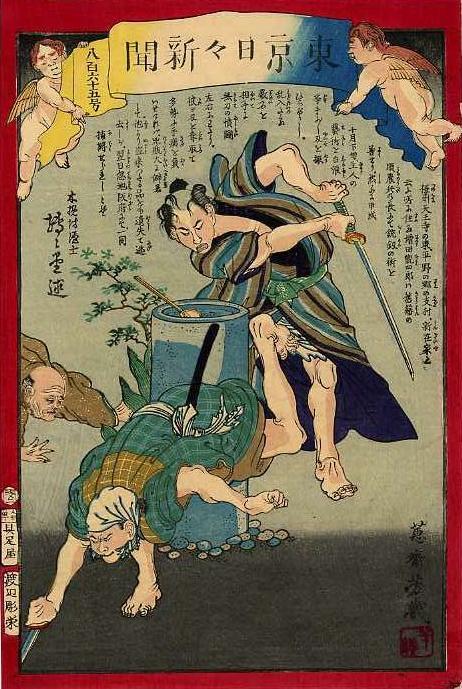Commentary
The same story is told in Hochi / YHS-513.
province of Tsu refects 摂州 -- "Sesshū" in Sino-Japanese but marked here to be read "Tsu no kuni" -- which would be written 津国 -- the original name of the province in the 7th century. The was renamed 摂津国 (Settsu no kuni) around 713. The region is now part of Osaka and Sakai cities in Osaka prefecture, and Kobe and other parts of Hyogo prefecture.While I have shown the phrases as punctuated in the story on the print, the first lines are intended to introduce the protagonist as follows:
As for Masuda Kanshiro [Kuwanshirou, Kwanshirō], who lives in a place called Shinzaiya, a branch village of the hamlet of Hirano east of Tennoji in Sesshu, he had been good at the techniques of the bayonet as head of the farmer militia at the time of the former domain.
These places are now within Osaka city.
Kōjutsu reflects 甲戌, which is also "kinoeinu" -- the year of the elder-brother [yang] of wood [yang wood] (ki no e) and the dog (inu) -- one of the 60 combinations of the 10 stems and 12 branches of the sexagenary calendar -- equivalent to 1874.